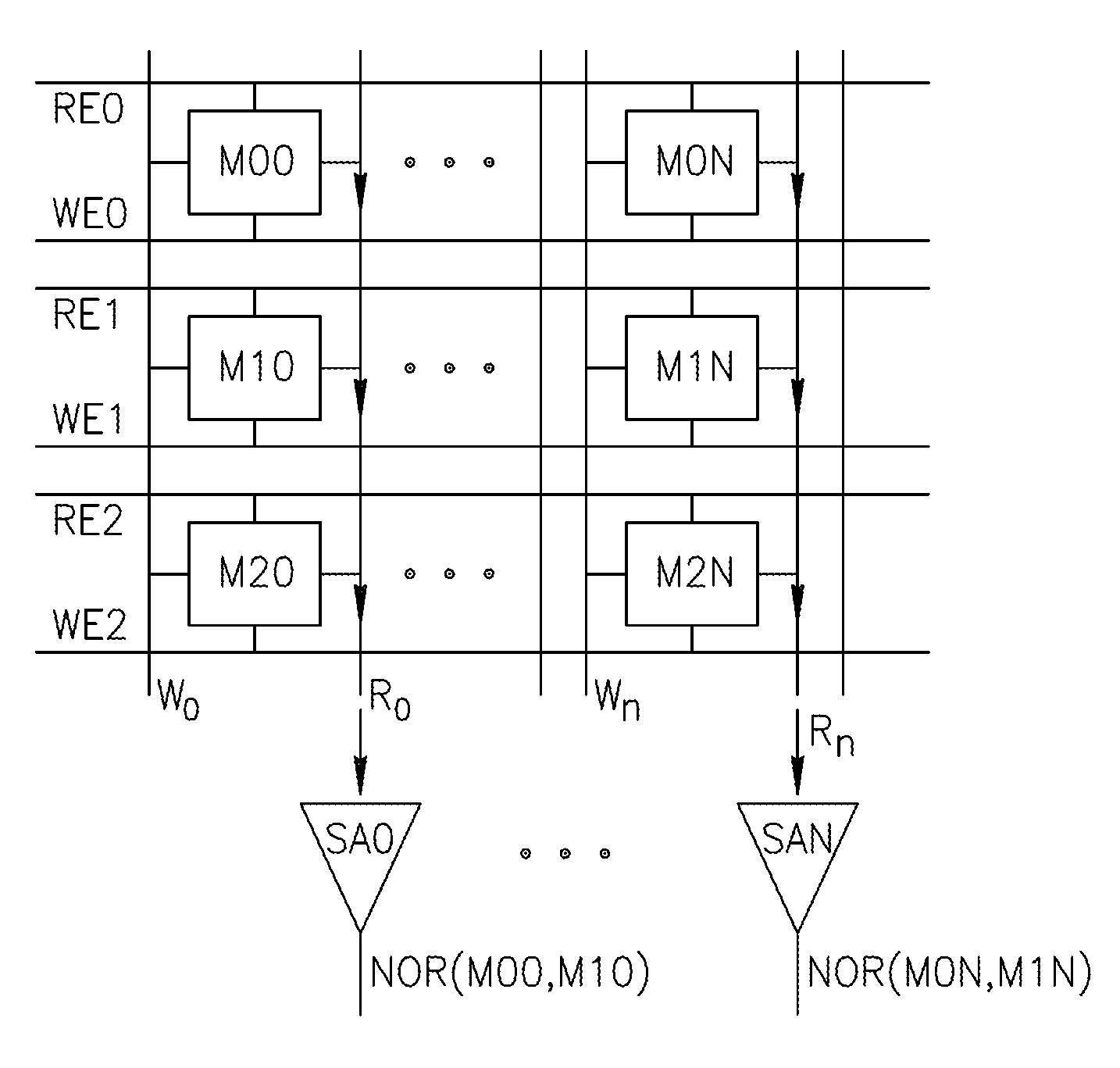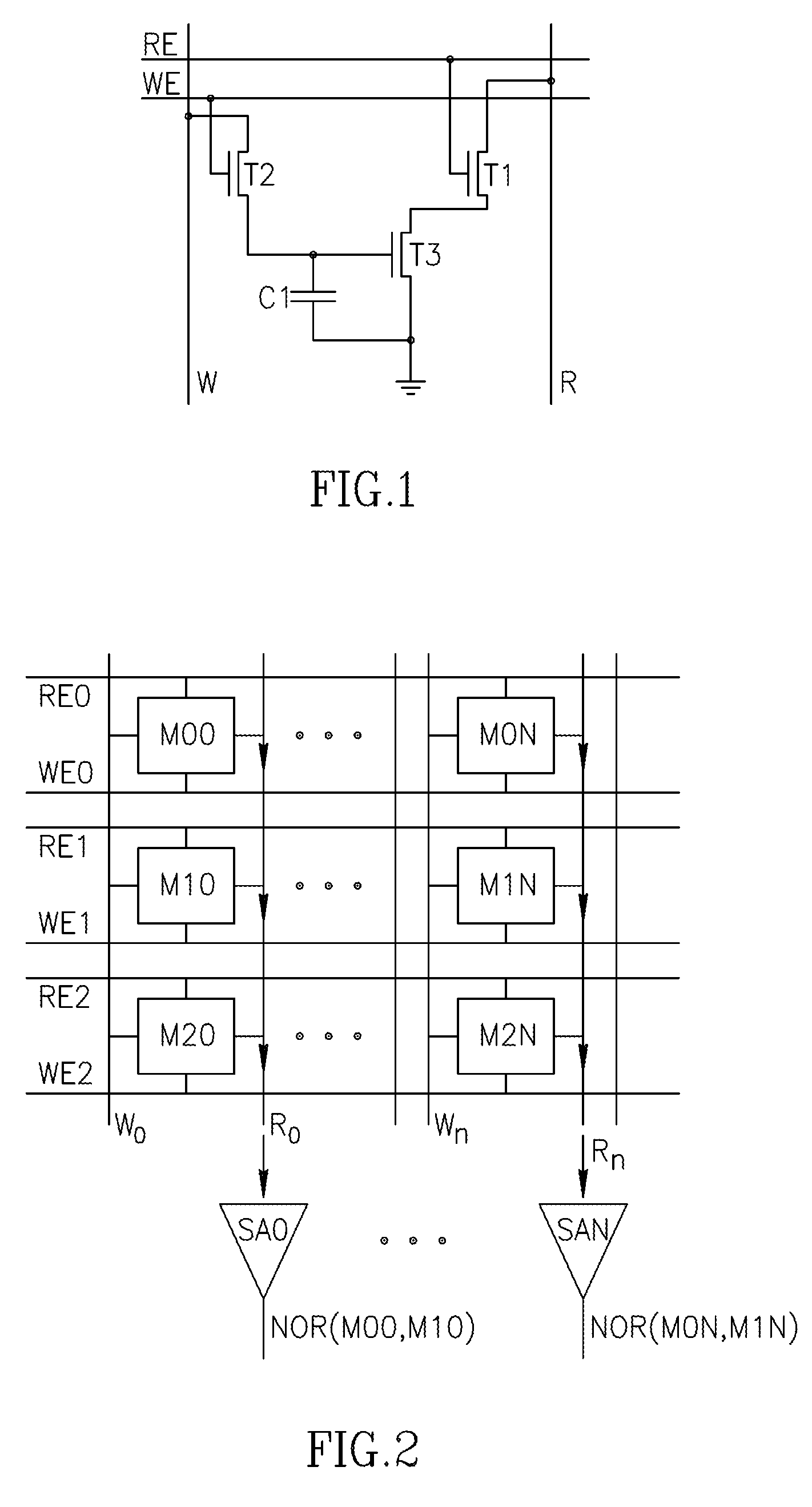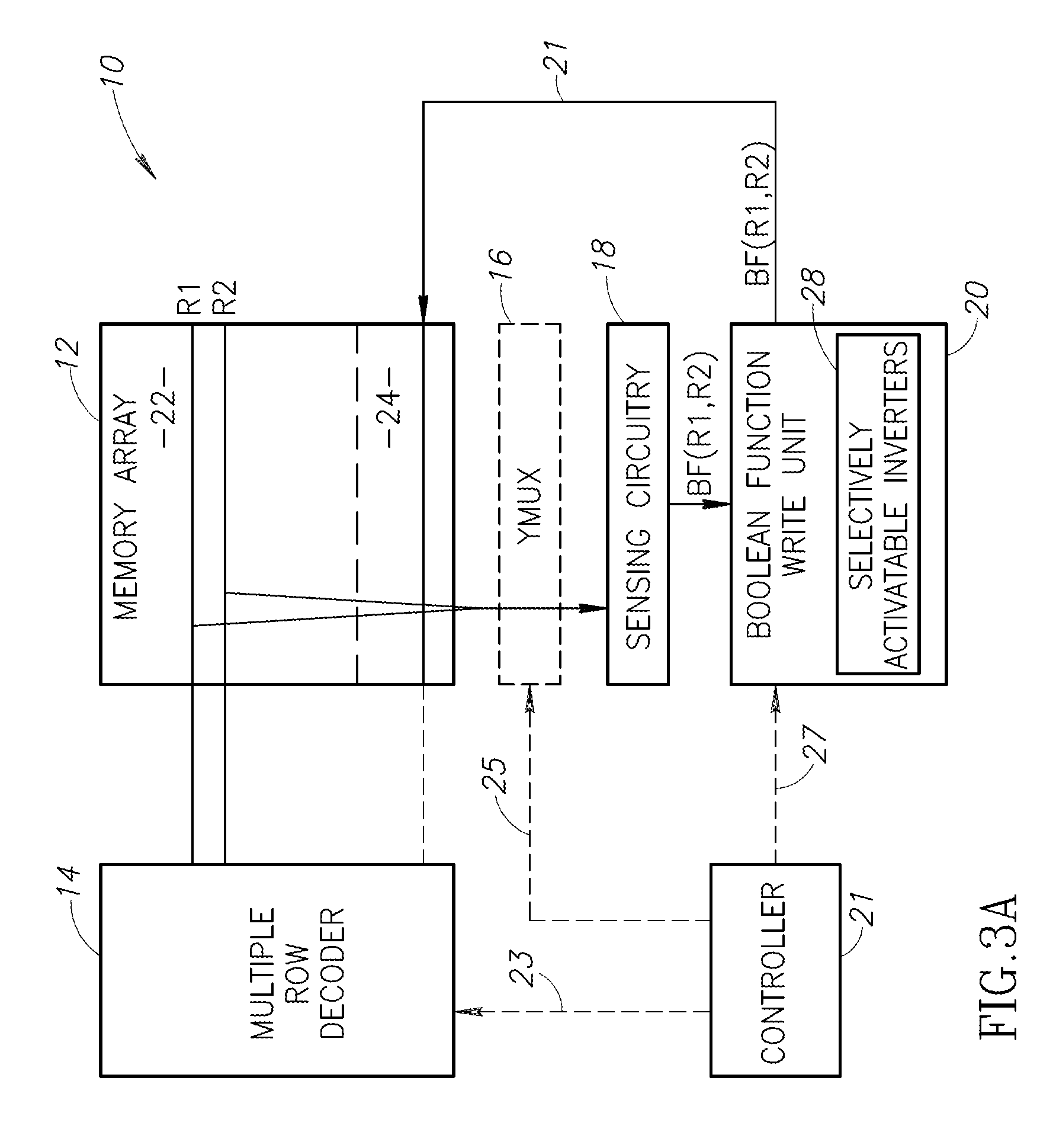Using storage cells to perform computation
a technology of storage cells and computation, applied in the field of memory cells, can solve the problem that the speed of buses has not increased at an equal pa
- Summary
- Abstract
- Description
- Claims
- Application Information
AI Technical Summary
Benefits of technology
Problems solved by technology
Method used
Image
Examples
Embodiment Construction
[0032]In the following detailed description, numerous specific details are set forth in order to provide a thorough understanding of the invention. However, it will be understood by those skilled in the art that the present invention may be practiced without these specific details. In other instances, well-known methods, procedures, and components have not been described in detail so as not to obscure the present invention.
[0033]Applicants have realized that computing operations may be performable within the memory array. As an illustration, FIG. 1 illustrates a standard 3T DRAM memory cell, formed of three transistors, T1, T2, T3 and a capacitor C1. The input to transistor T1 is connected to a read (R) line while its gate is connected to a read enable (RE) or a word line. The input to transistor T3 is connected to the output of transistor T1 while its gate is connected to the output of transistor T2, which is the input to capacitor C1. The output of transistor T2 is connected both ...
PUM
 Login to View More
Login to View More Abstract
Description
Claims
Application Information
 Login to View More
Login to View More - R&D
- Intellectual Property
- Life Sciences
- Materials
- Tech Scout
- Unparalleled Data Quality
- Higher Quality Content
- 60% Fewer Hallucinations
Browse by: Latest US Patents, China's latest patents, Technical Efficacy Thesaurus, Application Domain, Technology Topic, Popular Technical Reports.
© 2025 PatSnap. All rights reserved.Legal|Privacy policy|Modern Slavery Act Transparency Statement|Sitemap|About US| Contact US: help@patsnap.com



